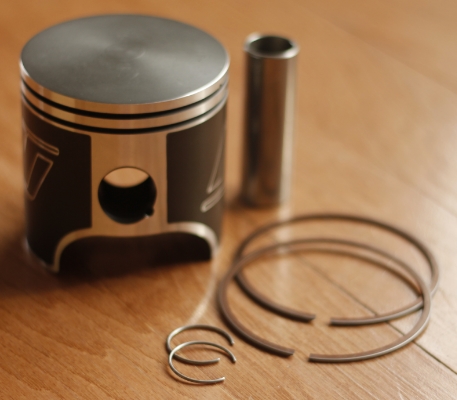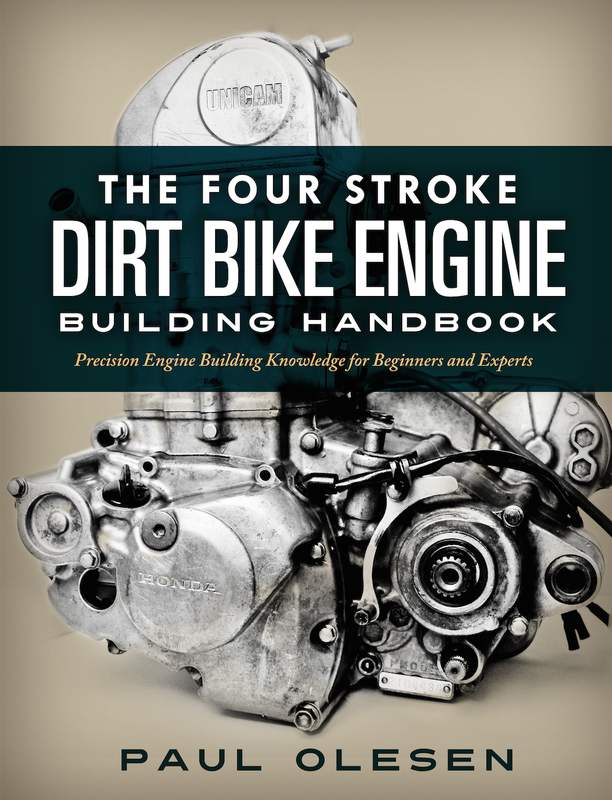Most of you are probably familiar with the practice of checking piston ring end gap when assembling an engine. What I want to share with you is why it is important to check ring end gap. Checking ring end gap when putting a new engine together or rebuilding an old one is critical because it will determine whether your engine runs flawlessly for countless hours or if you just wasted a whole bunch of money on a bunch of parts that are about to become scrap the first time you run the engine hard.
Let me share a quick story with you. The first time I assembled my Kawasaki H2 two-stroke triple engine I couldn’t wait to hear it run. It was tempting to skip all the steps I would call critical to the success of a good engine build, but I’m sure glad I didn’t. First, I noticed that my gearbox was improperly shimmed by the company that back cut my gears. Next, I found that the right hand piston came with the wrong rings! I tried assembling the rings onto the piston and noticed that the gap was almost four times as much as the spec’d value given by the piston and ring manufacturer. Had I decided to run with the rings that had that excessive end gap it probably would not have resulted in a failure. The right cylinder simply would have been down on power since most of the gas being compressed could escape and the cylinder would have low compression.
Now what if the situation was opposite what I just described? What if the rings had no end gap? Well, the outcome would have been much worse. Running your engine with too little end gap is a recipe for disaster. It’s time to revisit what I said last week about thermal expansion and how parts expand at different rates. If at room temperature there was no gap between the ends of the piston rings, what would happen when the rings’ temperature was elevated to 180°C? The ring would have no room to expand as it heated up and it would get tight to the cylinder bore, start to want to stick, scuff the cylinder bore, and wreak havoc on your entire engine! This example and explanation is the reason it is so critical to check end gap of the piston rings when assembling a new engine.
My advice when setting end gap would be to follow the manufacturer’s recommendations for end gap for their given product. The only time it might be necessary to deviate from their recommendations would be for race applications where more heat is generated than in a normal application. When in doubt, more end gap is always better than too little.
Most of you are aware that there are at least two sealing rings in a piston assembly and by now perhaps some of you are wondering if the end gap of each ring should be set the same. In my opinion it is best to set the second ring end gap to be slightly more than the first. The reason for this is to limit the possibility of pressure building up under the top ring. If pressure builds up under the top ring it increases the chance of the top ring fluttering which should be avoided at all costs. By having the second ring’s gap a little looser than the first, any combustion pressure that gets between the two rings has an easier time exiting.
For those of you who don’t mind a little math, here is a nice example. How exactly do the manufacturer’s determine the end gap that should be run? Let’s say the rule of thumb might be 0.003” of end gap per inch of cylinder bore for a particular application. Well who the heck decided on 0.003” per inch of bore and why?
Let’s assume the following for the sake of simplicity:
Cylinder crown temp = 300°C
Piston ring temp = 180°C
Cylinder liner temp = 100°C
The formula for linear expansion is:
∆L = α x D x ∆T
where:
∆L = Change in length of the piston ring
α = coefficient of thermal expansion (in this case steel = 0.000012m/m°C)
D = original diameter of the cylinder
∆T = Change in temperature
α = 0.000012m/m°C
D = Let’s assume the diameter to be equal to 1”.
∆T = 180°C - 100°C (difference between the liner and ring)
Now it all gets put into the equation and solved.
∆L = 0.000012m/m°C x 1 x 80°C
∆L = 0.003015 inches
So in our example, using temperatures fairly close to actual engine temperatures, we see that the ring will expand roughly 0.003 of an inch per 1 inch of cylinder bore. Hopefully this gives you a better idea of why the manufacturers specify the end gaps that they do.
As some who just read all about piston ring end gap, I think you are going to love the eBook I am about to launch, The Four Stroke Dirt Bike Engine Building Handbook. This book is a comprehensive guide to rebuilding your four stroke engine right in the comforts of your own garage. The eBook will be released at the end of April, 2015 and pre-order is now available. To learn more about the eBook click here.
Sign me up for the eNewsletter!
I'm ready to take my dirt bike knowledge to the next level.




